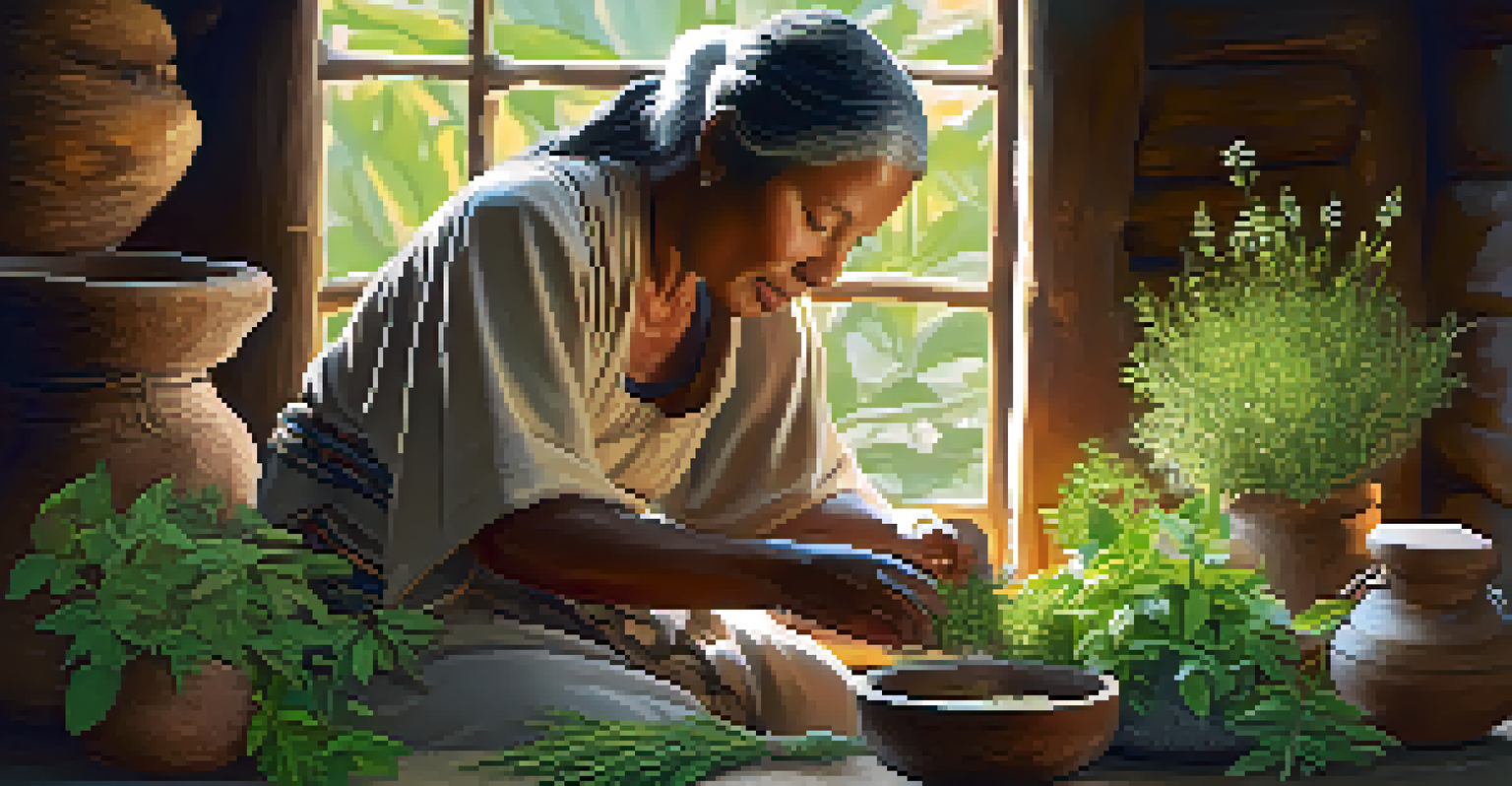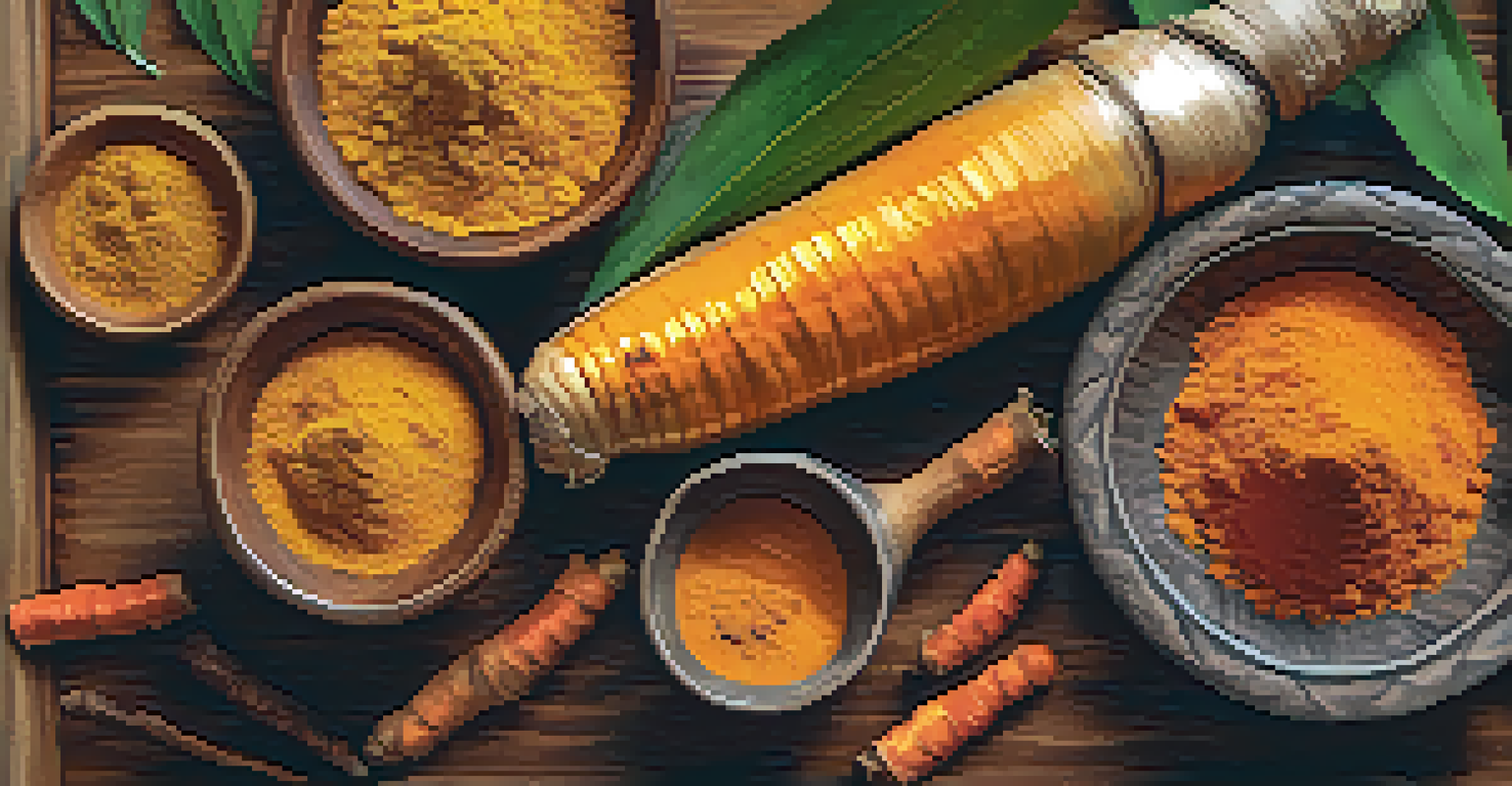The Role of Wild Plants in Traditional Medicine and Healing

Understanding Traditional Medicine and Its Roots
Traditional medicine encompasses a variety of healing practices that have been handed down through generations. Often, these practices rely heavily on the natural world, specifically wild plants, to treat ailments. By studying the historical context, we can appreciate how cultures around the globe have utilized their local flora for health and wellness.
The greatest medicine of all is teaching people how not to need it.
For many indigenous communities, wild plants are more than just remedies; they are integral to their cultural identity and spiritual practices. This connection to nature fosters a deep understanding of the ecosystem and its benefits. As these practices evolve, they continue to adapt, blending ancient wisdom with modern needs.
Moreover, traditional medicine often emphasizes holistic healing, addressing not only physical symptoms but also emotional and spiritual well-being. This comprehensive approach is one reason why many people seek out traditional methods, even in today's technologically advanced world.
The Diversity of Wild Plants Used in Healing
From the calming properties of chamomile to the antiseptic qualities of willow bark, wild plants offer a treasure trove of healing potential. Each region boasts its own unique array of medicinal plants, shaped by local ecosystems and cultural practices. This diversity allows for a wide range of treatments tailored to specific health issues.

For instance, in parts of Asia, ginseng is highly regarded for its ability to boost energy and improve overall health. In contrast, Native American tribes often utilize echinacea to enhance the immune system and fight infections. These examples highlight how local knowledge and biodiversity intertwine to create effective remedies.
Cultural Roots of Traditional Medicine
Traditional medicine is deeply rooted in cultural identity, utilizing local flora for health and spiritual practices.
Furthermore, the active compounds found in these plants are often the focus of modern scientific research. This ongoing exploration into the properties of wild plants helps validate traditional uses while also discovering new applications in medicine.
Cultural Significance of Wild Plants in Healing Practices
Wild plants in traditional medicine aren't just about physical healing; they carry cultural significance that shapes community practices. Many cultures have rituals that involve the gathering and preparation of medicinal herbs, turning healing into a communal event. This not only strengthens social bonds but also preserves valuable knowledge.
Nature itself is the best physician.
An example can be found in the practices of the Amazonian tribes, who often use ayahuasca in ceremonial settings. This plant-based brew is not only considered a medicine but also a spiritual guide, reflecting the intersection of health and culture. Such practices emphasize respect for nature and the interconnectedness of life.
These traditions also serve as a means of passing down knowledge through generations, ensuring that valuable insights about wild plants and their uses are not lost. As younger generations engage with these traditions, they may also find ways to innovate and adapt them to contemporary health challenges.
Scientific Validation of Traditional Healing Methods
In recent years, there has been a surge in interest from the scientific community regarding traditional medicine. Researchers are actively studying wild plants used in herbal remedies to understand their chemical properties and potential health benefits. This validation adds credibility to traditional practices that have stood the test of time.
For example, the anti-inflammatory properties of turmeric have garnered significant attention, leading to its use in various supplements and treatments worldwide. Such findings showcase how traditional knowledge can align with modern science, offering a comprehensive approach to health.
Scientific Validation of Herbal Remedies
Increasing scientific research is validating the health benefits of wild plants, bridging traditional knowledge with modern medicine.
Moreover, this scientific exploration often leads to the discovery of new medicines derived from these wild plants. By validating traditional uses, researchers not only honor the wisdom of indigenous cultures but also contribute to the advancement of medical science.
Challenges Facing Traditional Medicine Practices
Despite the resurgence of interest in traditional medicine, many challenges remain. One significant issue is the loss of biodiversity; as habitats are destroyed, many wild plants used in traditional healing are becoming endangered. This threatens not only the plants themselves but also the cultural practices that rely on them.
Additionally, the commercialization of herbal remedies can sometimes lead to the exploitation of indigenous knowledge. Without proper recognition and compensation, the communities that have preserved this knowledge risk losing their cultural heritage. This raises ethical concerns about who benefits from these natural resources.
Furthermore, the integration of traditional medicine into modern healthcare systems can be complicated. Striking a balance between conventional treatments and traditional practices requires collaboration and mutual respect between different medical paradigms.
Sustainable Practices for Harvesting Wild Plants
Sustainability is key when it comes to harvesting wild plants for medicinal use. Many traditional cultures have established practices that ensure the responsible gathering of plants, preventing overharvesting and promoting regeneration. These practices are rooted in a deep respect for nature, recognizing the importance of maintaining balance within ecosystems.
For instance, some communities employ a 'harvest only what you need' philosophy, which helps conserve plant populations. They also often have sacred rituals associated with gathering, further emphasizing the spiritual connection to the plants. This mindful approach can serve as a model for sustainable practices worldwide.
Sustainability in Plant Harvesting
Sustainable harvesting practices are essential to preserve wild plants and ensure the longevity of traditional healing methods.
As interest in wild plants grows, it is essential to promote sustainable harvesting practices that protect both the plants and the knowledge surrounding them. This not only benefits the environment but also preserves traditional medicine for future generations.
Looking Ahead: The Future of Wild Plants in Healing
The future of wild plants in traditional medicine looks promising, especially as more people seek natural alternatives for health and wellness. This trend has sparked a renewed interest in herbalism and the wisdom of ancestral practices. As a result, we can expect an increase in research and education around these topics.
Moreover, the blending of traditional and modern medicine offers exciting possibilities for innovative treatments. By acknowledging the value of wild plants and integrating them into contemporary healthcare, we can create a more holistic approach to health that honors both past and present.

Ultimately, the journey of wild plants in traditional medicine is a testament to humanity's enduring connection to nature. As we look to the future, it’s essential to continue learning from these practices while ensuring their sustainability and cultural integrity.